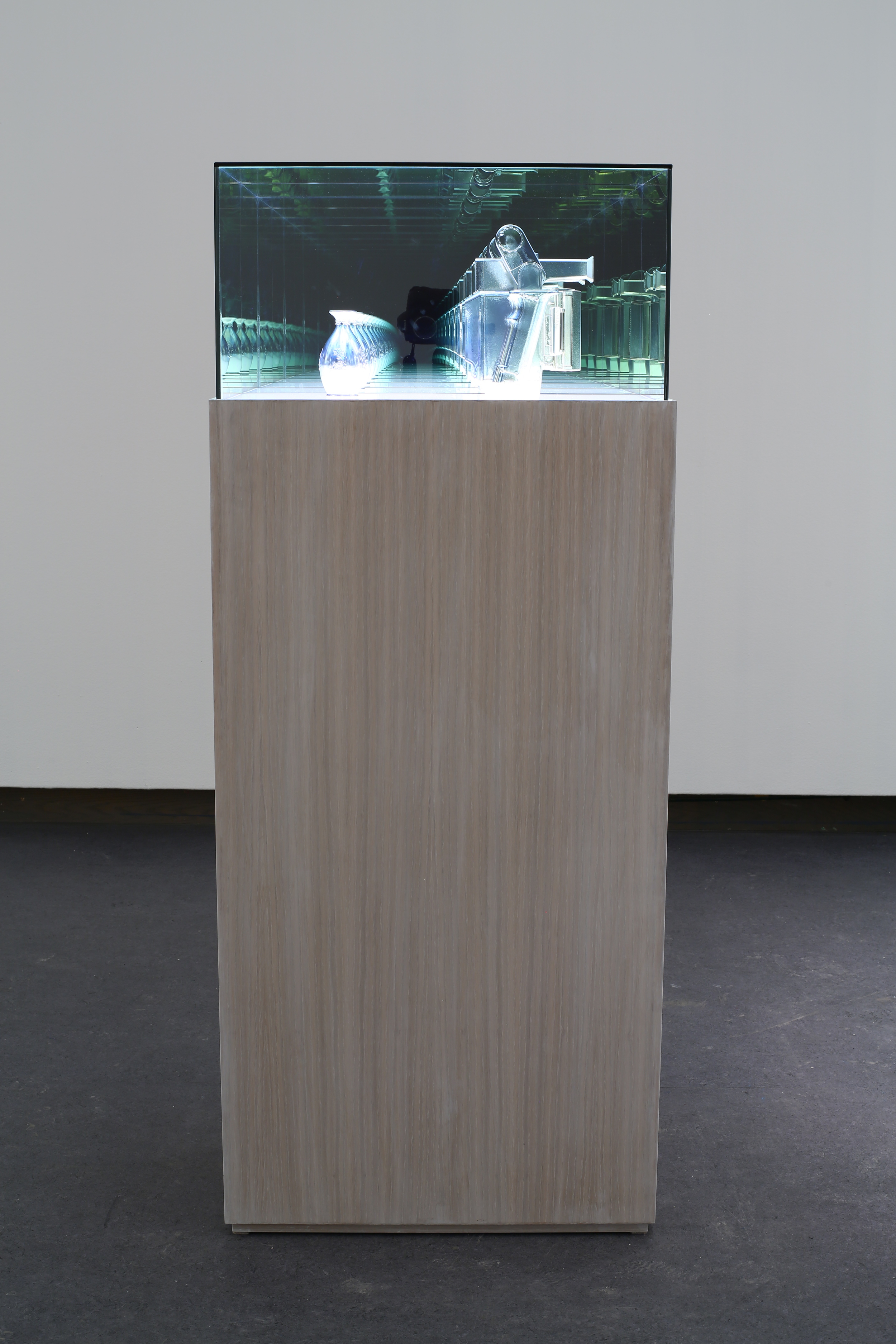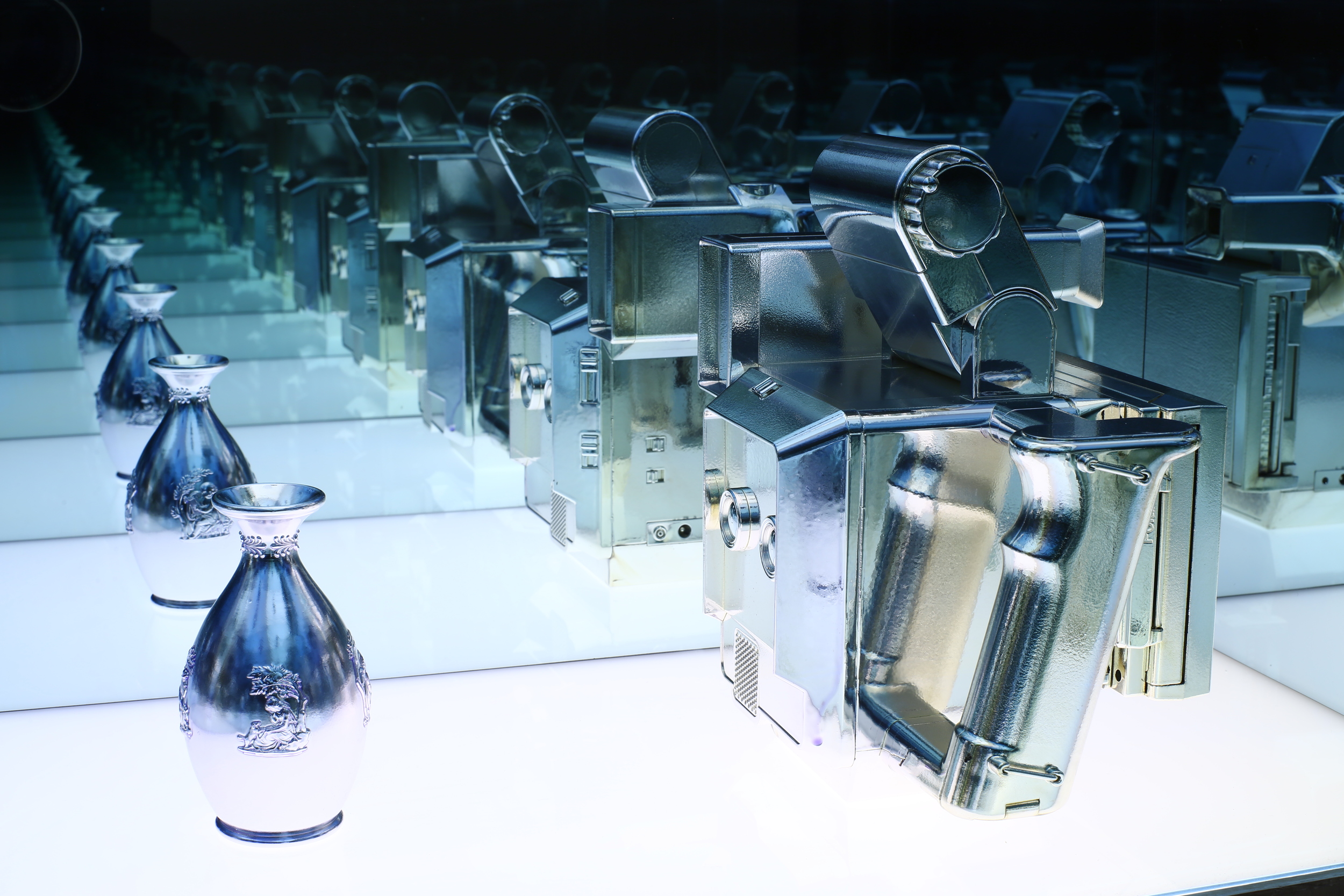Disused Portrait Camera Considers Wedgwood Vase, 2015, Silvered Objects, Custom Plinth, 13x 24x60 inches.
"Because silver-plating masks some of the features of the two objects placed on the plinth, it takes a moment, against the glaring light and reflection, to identify what is beneath the gleam. The twin lenses of a camera focused directly on the distinctive shape of a Wedgwood vase provide clues that these objects allude to photography’s own history. Thomas Wedgwood (1771-1805), the youngest son of well-known ceramic manufacturer Josiah Wedgwood, was—with his colleague Sir Humphry Davy—a pioneering figure in the early inventions leading to photography.[i] In effect, facing the Wedgwood vase is an inheritor of those experiments: a Polaroid mini-portrait Studio Express. Analog cameras, like this mid-twentieth century example, are now largely considered obsolete; they exploit the light-sensitive properties of silver compounds to translate appearance into representation. But here in Wright’s installation, the silvery effects of plating seem to externalize analog photography’s distinctive alchemy. At the same time, encasing these photographic objects in a veneer of precious metal becomes a commemorative act, like bronzing a baby’s first shoes. To quote the American Oliver Wendell Holmes Sr.’s familiar description of the daguerreotype, one of the first photographic inventions: this installation forms a “mirror with a memory”.[ii] "
[i] Geoffrey Batchen, “Tom Wedgewood and Humphry Davy,” History of Photography. 17, 2 (1993): 172-83.
[ii] Oliver Wendell Holmes, “The Stereoscope and the Stereograph,” The Atlantic. June 1859. http://www.theatlantic.com/magazine/archive/1859/06/the-stereoscope-and-the-stereograph/303361/?single_page=true
(excerpted from the catalog accompanying Andrew Wright's exhibition Pretty Lofty and Heavy All At Once by Randy Innes and Carol Payne. This portion from Carol Payne' s essay: "Refracting Time: Andrew Wright’s Images of Photographic Memory")




